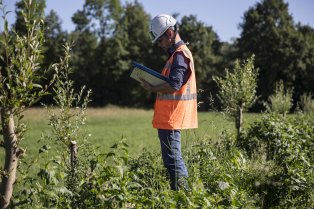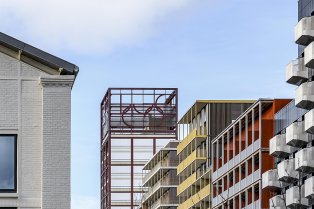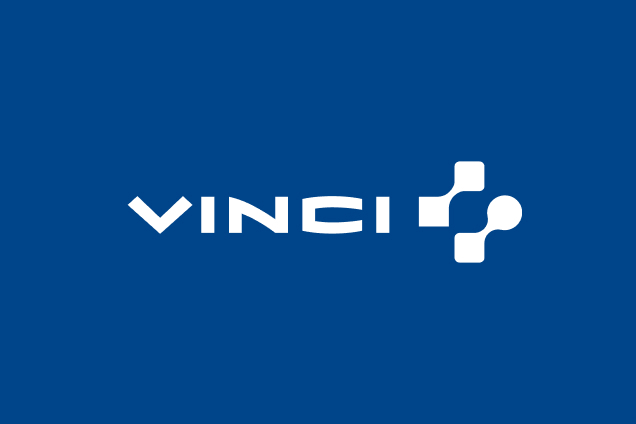Innovating for sustainable construction
In its building activities, VINCI contributes to urban renewal and carries out a growing number of renovation projects, in which the challenges of reducing energy consumption and the carbon footprint of buildings go hand in hand with those of transforming uses and ways of living and working. Reducing environmental impacts also guides the infrastructure projects carried out under the Group’s programme management.
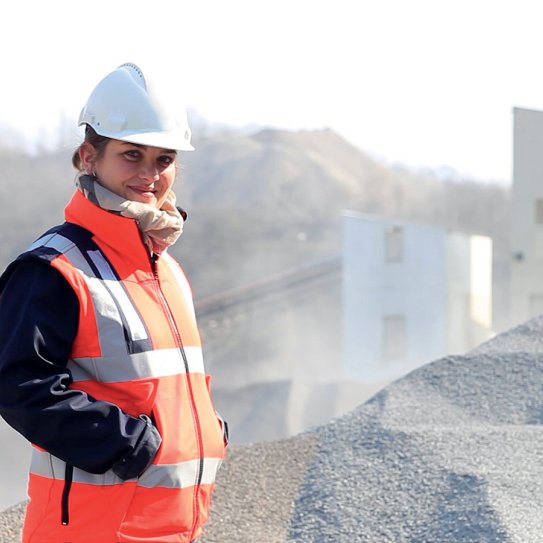
Towards low-carbon construction
VINCI Construction is setting new standards in the field of low-carbon concretes, with formulations from its Exegy® range that reduce CO2 emissions by up to 60% compared with traditional concretes and offer at least equivalent strength and durability at similar costs. In partnership with all the players in the sector, VINCI Construction aims to develop the use of these concretes for all types of civil works, both buildings and infrastructure, and is committed to making their use widespread on its own worksites over the next decade, with a target of using 90% low-carbon concretes on all its worksites by 2030.
Through its subsidiary Arbonis, VINCI Construction is also developing timber construction solutions. In addition to its improved carbon footprint and aesthetic appeal, timber construction offers advantages in terms of strength and sustainability. Wood is used as a structural material in a growing number of the Group's projects (school and office buildings, high-rise buildings, car parks, etc.) and is gradually becoming a key component of mixed construction, ensuring that each material (wood, concrete and steel) is used within its optimum performance range.
Motorway construction and decarbonisation
Decarbonisation is also a major challenge for the projects carried out under the responsibility of the VINCI companies holding transport infrastructure concessions. As such, VINCI Autoroutes is committed to reducing the carbon footprint of the works carried out across its network by 50% by 2030, compared with 2018. The measures deployed in collaboration between its project management teams and its project management partners and construction companies have already reduced the footprint of its projects by an average of 25% per operation by 2024.
In these projects, as with those carried out by VINCI Highways internationally, advanced recycling solutions are implemented to combine decarbonisation and circular economy objectives. For example, on the D4 motorway project in the Czech Republic, all the asphalt from the old section and 900,000 t of tailings from mining activities in the region are being recycled in the construction of the new infrastructure.
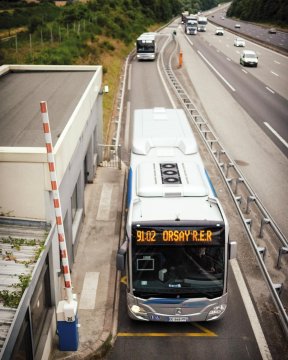
Developing recycling and reuse channels
As part of its circular economy strategy, VINCI Construction is developing the use of recycled aggregates, particularly from excavated earth and demolition sites, for its road construction and maintenance projects. Upstream of its construction activities, VINCI Construction produces around 82 Mt of aggregates every year in France.
As the market leader in France, VINCI Construction is aiming to double its production of aggregates from recycled materials by 2030. To achieve this goal, it is supported by a network of more than 200 material recycling and recovery platforms, which implement the Granulat+ circular economy approach. A new milestone was reached in 2023 with the launch of Ogêo aggregates, which guarantee top-quality formulations.
VINCI is also developing re-use. For example, VINCI Energies offers solutions for sourcing cable trays (especially from demolition companies), overseeing the associated logistics (transport and storage) and optimising their technical, economic and environmental value through engineering adapted to re-use. At some worksites, materials can be reused in situ, further reducing their carbon footprint.
